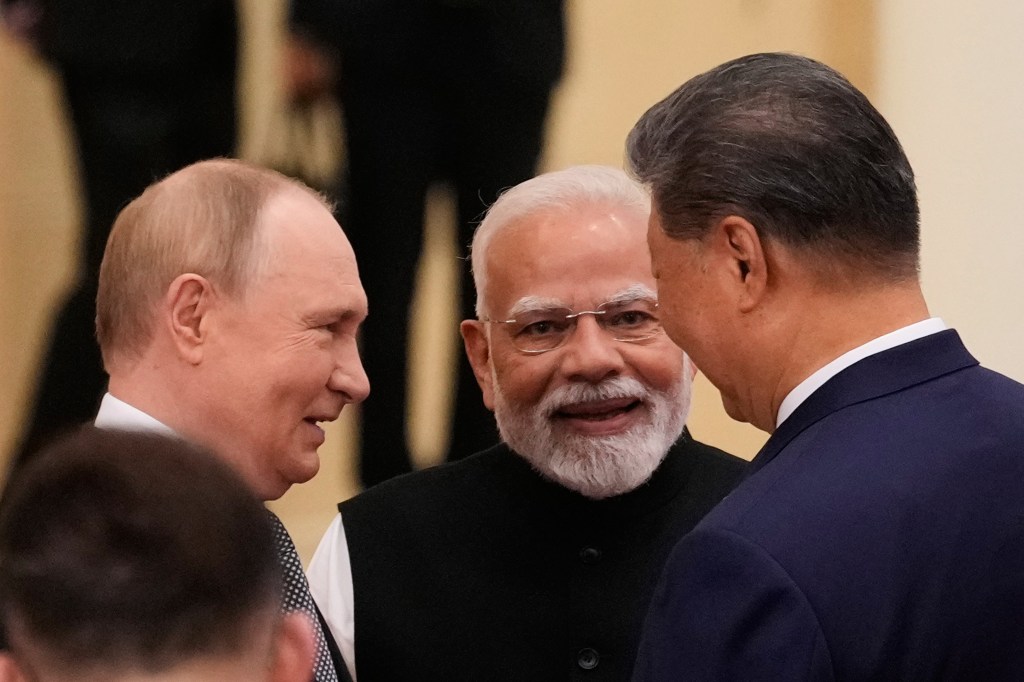Two people are preparing to dance. There are faint sounds of music. The singer is not visible yet, but from the outlines it is clear that the singer is not India’s prime minister.
Mr Narendra Modi has come a long way since Mahabalipuram, the gentle sway of the jhoola that he shared with China’s President Xi Jin Ping, the clash between PLA and the Indian Army at Galwan on June 15, 2020, the death of 20 Indian jawans, and Mr Modi’s famous clean-chit at the All-party meeting on June 19, “No outsider has intruded into Indian territory nor is any outsider inside Indian territory”.
Ministers contradict PM
Within weeks, the defence minister and the foreign minister contradicted the prime minister and laid down the red lines: any unilateral attempt to change the status quo was unacceptable, and ‘peace on the border’ and restoration of the status quo ante are the pre-conditions for normal ties with China. In commanders’ level talks, India spelt out a three-step process: disengagement, de-escalation and demobilisation. China engaged India in the talks, and disengaged, but brushed aside de-escalation and demobilisation. All the evidence, including satellite images, point to the opposite: heavy mobilisation of soldiers and military equipment on the border, installation of 5G network, air strips, new roads and new settlements for troops and common people. China has most certainly changed the status quo.
Galwan is not the sole friction point. Depsang and Demchok have not been resolved. According to The Hindu, the Chinese military remains on India’s side of the LAC at these points. As recently as December 2024, India’s foreign minister said, “Our ties have been abnormal since 2020.”
The worst blow was during the four-day war between India and Pakistan in June this year. Chinese aircraft (J-10) and Chinese missiles (PL-15) were allowed by China to be deployed by Pakistan. There was evidence that the PLA strategised for Pakistan and guided the Pakistan armed forces in the conduct of the war.
Attack & counter attack
The Indian government talked about ‘decoupling’ from China, but it is proving difficult. India’s merchandise trade deficit with China has mounted year after year and in 2024-25, the deficit stood at USD 100 billion. India is almost wholly dependent on China for several key goods. 174 Chinese companies are registered in India. 3,560 Indian companies have Chinese directors on their Boards (source: Lok Sabha Q & A, 12-12-2022).
After the India-Pakistan war, India banned over 200 Chinese mobile apps like TikTok. It imposed restrictions on investments from China (as a country ‘sharing land borders with India’) and stalled investments by Chinese companies. Non-tariff barriers were raised. Chinese participation in Delhi-Meerut RRTS and some road and power sector tenders were cancelled. On its part, China stopped the export of critical minerals and fertilisers. It also severely disrupted the supply of intermediate goods that are required by solar, EV and other manufacturers.
Mr Xi has invested vast political capital in Shanghai Co-operation Organization. At SCO summits in-person mode (2019, 2022 and 2024), there was no bilateral meeting between Mr Modi and Mr Xi. Hence, the bilateral meeting at the 2025 summit in Tianjin was historic. Going forward, it is unlikely there will be a breakthrough on the border conflict, but progress could be made on differences in trade and investment that have been aggravated by both sides in recent months. If that happens, it will be a U-turn for both India and China.
On the rebound
We must carefully analyse the causes and reasons why both countries seem inclined to turn around. India got a bitter lesson in bilateral relations when President Trump rebuffed Mr Modi despite Mr Modi’s over-the-top dosti with Mr Trump. It learned a brutal lesson from a transactional President whose private commercial interests and narrow political interests prevailed over sound economics, and he imposed the highest tariffs on India (and Brazil).
India is on the rebound like a rejected lover and seeks to find comfort in mending its relations with China. Likewise, China wants to do business in the world’s largest market for both trade and investment that is undoubtedly India. It also wants to expand its sphere of influence in the Asia-Pacific region and will therefore do a few things to humour its sole rival. But the reality check is that China will never yield on its claims on the India-China border or on Pakistan which is its Belt and Road Initiative partner and large purchaser of military hardware. Recall that Mr Xi cleverly avoided the two issues that Mr Modi emphasised in the bilateral meeting at Tianjin — trade and terrorism.
At present, Russia alone seems to be in a safe space. President Putin can continue to sell oil and gas to India, China and Europe, and sell military equipment to India. He can continue his war against Ukraine with the help of North Korean soldiers.
It is clear that Mr Modi is not calling the tune anywhere. He is caught between India’s largest export destination (USA) and largest import country-of-origin (China). He is caught between tariff threats and trade dependence. He is caught between QUAD and SCO/RIC.
Mr Modi, like Mr Trump, believes his political instincts are always right. Hence, his style of personal diplomacy. After suffering setbacks, he should abandon dosti diplomacy, hugs and hand-in-hand strolls, and heed the advice of the Indian Foreign Service and seasoned diplomats.

